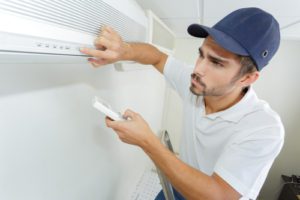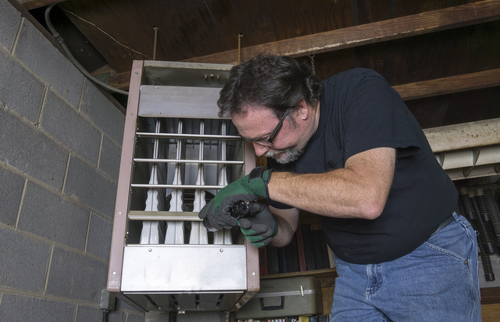If you’ve been living in Santa Rosa, CA for a few years, you’re probably no stranger to air conditioners and the people who work on them. However, that doesn’t necessarily mean you know everything you’d like to know about these complex and necessary machines. In fact, after you’ve dealt with one or two different HVAC contractors, many of you would probably like to demystify the process somewhat so that you’ll have a better understanding of what they’re doing the next time they visit. For that reason, it might be time to start doing a little more reading on AC contractors in Santa Rosa and the units they services.
Santa Rosa is full of AC units, so it also makes sense that it’s full of AC contractors. The more you understand about air conditioners, the more you’ll understand when choosing a contractor and watching them work. If you feel that it’s time to upgrade your AC knowledge, you’ve come to the right place. Read on, and discover more about these necessary appliances and their service technicians.

The Steps AC Contractors in Santa Rosa Go Through During a Service Call
During a routine inspection and tune up, your AC contractors in Santa Rosa will go through a set process to locate any potential issues with your AC. They almost always start with the simplest fixes and most obvious issues. A service technician’s time is valuable, and the longer they have to spend in your home the more you’ll end up paying them for their labor. Because of this, AC technicians with their customers’ best interests at heart will approach the easiest and most likely areas of your system before moving on to check complex components. Their reasoning is that they can save you more money if the problem turns out to be something basic that they can solve quickly.
Taking Care of Basics
First, your contractor will likely measure the amperage and voltage of your blower motor to ensure that it is running correctly. This motor is essential for proper air circulation in your home. Next, they’ll probably move on to the thermostat, air filters, and any exterior parts that require lubrication. Many problems are simply the result of thermostat errors or dirty filters, both of which are easy and relatively inexpensive to fix. Lubrication is also a simple yet crucial step in the service process. Proper lubrication ensures that your components are functioning efficiently and not grinding against each other, which can cause premature wear-and-tear. These operations are some of the most basic that an AC technician performs on a routine visit, but they also nip many AC problems in the bud. If your technician doesn’t start with these tasks, be sure to ask them why not.
More Detailed Operations
The next area your contractor should look at is the indoor coil. Coils have the potential to be expensive, and they are often subject to freezing if your system suffers from more fundamental problems such as poor circulation. Because of this, it may be helpful to have your technician look at your evaporator in the event of a bad fan or filter, unless they can ascertain that it has only occurred recently.
After looking at the coil, your technician should turn their attentions to the condensate drain and condenser coil. Clogged drains are not generic, but they are easily fixed. Condenser coils, on the other hand, are relatively delicate and can cost a lot to replace.
Next, your technician will probably look at the refrigerant in your system. Refrigerant leaks are usually fairly obvious, and testing refrigerant levels can be a somewhat laborious process, requiring special monitoring equipment and the removal of your unit’s access valve. Because of this, contractors will usually wait until ensuring the problem isn’t located in a simpler spot before checking refrigerant unless a leak is apparent.
Once refrigerant has been accounted for, your technician will go through your AC’s electrical systems. A problem with any of these components will likely require the services of an electrician, which is why they aren’t higher up on the list. Assuming no problems have been found up to this point, they’ll finish by looking at your ductwork and your compressor. These are two of the most expensive and time-consuming parts to repair, but fortunately, they are also less likely to be the source of trouble.
With that said, it’s critical that you arrange for routine service on your AC so that simple problems don’t cause more major issues. Poor air circulation or a system that overworks itself might seem like problems you can live with right now, but they have the potential to cause significant inconveniences such as compressor failure. Now that you have a detailed idea of what your AC contractors in Santa Rosa should do and why you’ll be able to call for service with confidence and trust someone with your system maintenance on a regular basis. Doing so will save you lots of money and worry overall. Make your summer in Santa Rosa, CA truly comfortable when you learn all you can about the professionals you’ll use to maintain it.
HVAC service in Santa Rosa doesn’t have to be complicated. Use the information given above to help you make smart choices about your service, and stay cool all summer. Contact us for more information.
Frequently Asked Questions About AC Contractors and Services in Santa Rosa, CA
1. What do AC contractors check during a routine service?
AC contractors inspect the blower motor, air filters, thermostat, refrigerant levels, and perform basic maintenance like lubrication. Regular maintenance can improve efficiency by up to 15%.
2. How often should I change my air filters?
Replace your air filters every 90 days. Dirty filters can reduce efficiency by 5-15%.
3. Why is it important to maintain clearance around my outdoor unit?
You need at least 2 feet of clearance for proper airflow. Blocked units can reduce efficiency by 30%.
4. How much can regular AC maintenance save on energy bills?
Routine maintenance can lower your energy bills by 5-40% by keeping your system running efficiently.
5. When should I ask my contractor to check refrigerant levels?
If you notice cooling issues or higher energy bills, low refrigerant might be the cause. Proper refrigerant levels improve efficiency by 20%.
6. What is the cost difference between repairing and replacing AC units?
Frequent repairs can add up quickly. On average, a new system can save 20-40% on energy costs compared to an old, inefficient unit.
7. How does poor air circulation affect my AC system?
Poor air circulation can cause frozen coils and compressor failure, which can cost up to $3,000 to repair.
8. Why should I keep my condensate drain clean?
A clogged condensate drain can cause water damage and system shutdowns. Regular cleaning can prevent up to $600 in repairs.
9. How often should I have my ductwork inspected?
Ductwork should be inspected every 3-5 years. Leaky ducts can waste up to 30% of your cooling energy.
10. How much can I save by upgrading to a more efficient AC unit?
Upgrading to a high-efficiency AC unit can save you 20-40% on energy bills annually, according to Energy Star.



